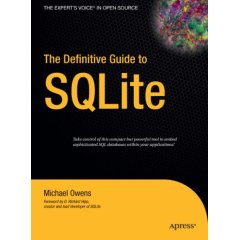Three Moves
Ubuntu Moves
There is the idea of switching my Ubuntu Virtual Machine between a static IP and DHCP with some kind of Bash script. “How to set a static IP in Ubuntu from the shell” looks like a start.
The RubyOnRails document at help.ubuntu.com is in the hopper with my Tomcat ‘background’ research—seriously in the background… And speaking of Tomcat, “Charset Pitfalls in JSP/Servlet Containers” needs to get in the hopper too.
TV Out Moves
The Songhay Studio workstation uses a humble MSI NX6200AX-TD256. We found out very quickly that TV Out is now marked HDTV and the suspicion here is that TV Out for “modern” video cards supports HDTV only. In other words I can’t get TV Out to work on my new video card. This is the only public statement about this matter by MSI that I can find:
To test the TV-out feature of your graphics card, turn off your computer. Then connect the S-VIDEO cable from your graphics card to your TV. If your TV does not support S-VIDEO, then you may need to purchase an “S-VIDEO to Composite” adapter. Once you have all the connections needed, connect your graphics card to your TV. Make sure there are no other devices in between, such as a VCR or switchbox. Unplug the PC monitor from your graphics card leaving only the TV connected to your PC. Make sure your TV is set to AUX or Line-In. Otherwise your graphics card will not detect the presence of a TV. Turn on your PC. The system should now automatically detect your TV and send the video signal to your TV. If it does display the video signal into your TV but stops once you boot into Windows, it may be a driver issue. You may download the latest drivers for your graphics card from: MSI Support Driver. If you do not get a video signal on your TV when you turn on your PC, then it means either your TV is not sending a video signal back to your graphics card to let it know that a TV is present, or the TV encoder that handles TV output is not functioning. If you have a different TV to test with, please perform the same test to see if the TV-out is working. Please be sure that none of the pins inside the video cable is bent or missing. If you cannot get TV output from any TV, your TV encoder is probably defective. If your card is still under warranty, contact your graphics card manufacturer or the retail store where you purchased your graphics card for possible graphics card replacement.
The next move was to look into some kind of HDTV to “standard” adapter at places like svideo.com. But this entire investigation may be based on the ignorant assumption that a TV Out port on a “modern” video card (that is clearly S-Video) can only be plugged into an HDTV.
SonghaySystem.com Moves
 SonghaySystem.com now runs on SQLite. This is based on the concept that that not many small businesses will produce millions of logical documents for read-only access on the Internet. Songhay System is no exception. Specifically, the maintenance of MySQL databases for Web applications like WordPress and Drupal ‘helped’ me to revaluate the technical requirements of Web sites.
SonghaySystem.com now runs on SQLite. This is based on the concept that that not many small businesses will produce millions of logical documents for read-only access on the Internet. Songhay System is no exception. Specifically, the maintenance of MySQL databases for Web applications like WordPress and Drupal ‘helped’ me to revaluate the technical requirements of Web sites.
My renewed respect for the Linux environment in general and rsync in particular moves me toward prioritizing document-centric data management solutions over collecting servers. My experience in IT takes me beyond being insecure about developing solutions that would be considered “toys.” Less is more. Google’s massive success is based (in part) on a very large array of “small” machines.
And here is another detail from one with no disposable income trying to be frugal: SonghaySystem.com is hosted on a shared server by a third party provider. When the provider has uptime problems sometimes the database server will “go down” before the Web server does. One potential advantage of using SQLite in this context is that it is treated like just another file to access. So your hosted web site can still serve files while the server holding your database hostage can go through its drama.
But ultimately there is satisfaction with doing so much for so little. It just happens that Nicholas Carr goes into great detail about this in “Welcome back to frugal computing.” Carr quotes Brian Hays, “…efficiency is more than a matter of economics and industrial policy; it has an aesthetic aspect and even an ethical one ... There is satisfaction in accomplishing more with less, in wringing the most results out of the least resources…”
